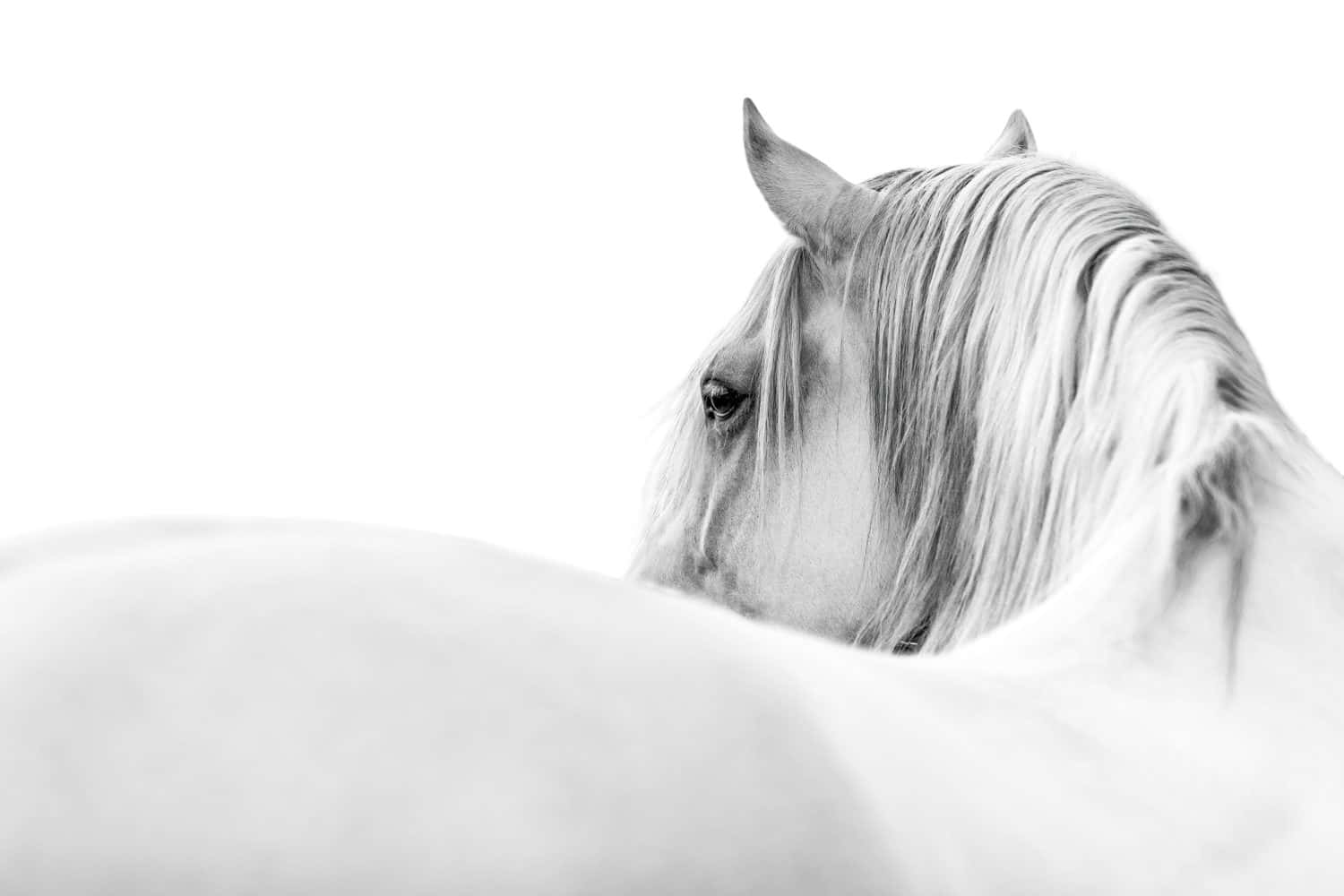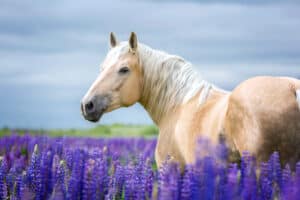White horses have long been appealing to many cultures and people. The dramatic brightness of their coats captures the eye and lends them a certain mystical quality. But not all white horses are actually white. Genetics play a very interesting role in determining the exact color of a horse’s coat and skin, with a wide degree of variation. While many people may believe that all white horses are the same, the reality is much more complicated. Learn what makes a horse a “true” white horse, how to tell the difference, and whether horses can have albinism.
True White Horses Vs. Horses That Appear White

Gray horses that appear white show pigmentation in certain spots, most obviously around the muzzle.
©Callipso88/Shutterstock.com
An easy way to tell a true white horse apart from one that is not is to check for pigmentation of the skin. True white horses have pink, unpigmented skin along with a white coat. Horses that appear white, including gray horses, which sometimes lighten as they age, maintain a degree of pigmentation in their skin and coat.
Genetically, a true white horse does not have pigment cells, or melanocytes, that create pigmentation. In other types of horses that appear white, these melanocytes are present but might be working in a different way to produce a lighter color that still has some type of pigment.
Examples of True White Horses
Not every white horse has the same genes to create its white coat. Scientists studying equine genetics continue to discover new information about the appearance of white coats in horses. In the genetic code of horses, at least four depigmentation phenotypes are present. Certain genes can sometimes be traced back to a foundation animal, like the stallion Sultan of the Camarillo White Horses.
Dominant White
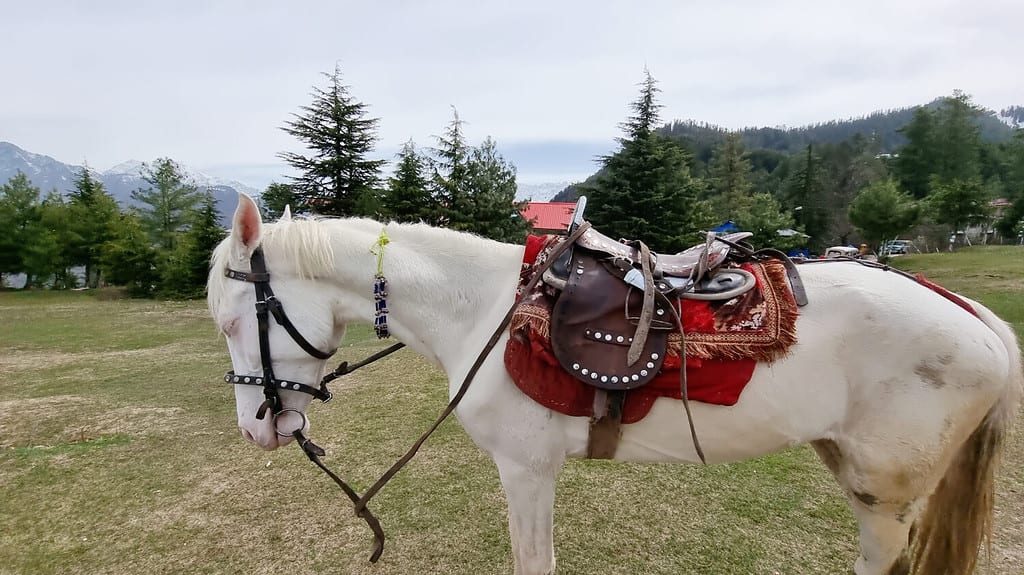
This type of white horse is born with a white coat that stays white throughout its life, instead of lightening over time.
©Jrs Jahangeer/Shutterstock.com
Dominant white is the name for a large group of gene variations known to produce true, all-white horses. This gene has been documented in a variety of breeds, including Arabian horses, Thoroughbreds, and others. Although they display a lack of pigment in their skin and coat, dominant white horses often have pigmented eyes.
Lethal White Syndrome

Genetic testing can help horse breeders discover potentially lethal combinations before they breed their horses.
©Rita_Kochmarjova/Shutterstock.com
Sometimes, genetics create devastating combinations. For most foals born with lethal white syndrome, it is typical for them to pass away due to colon issues within three days. Lethal white syndrome results from crossing two horses carrying the Frame overo (O) gene together. Foals are born with pink skin, all-white coats, blue eyes, and an untreatable colon condition. This mutation arises mainly in piebald or paint horses with a very specific white pattern gene.
Leopard Complex
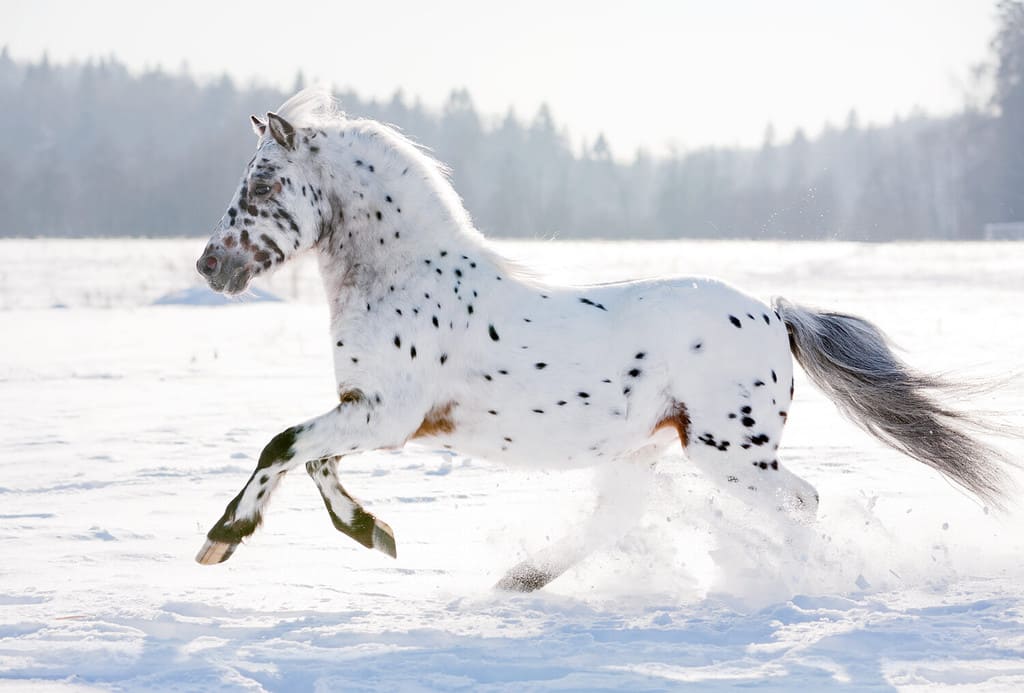
Mottling on the skin of spotted horses, like Appaloosas, is pigmented. However, the white areas lack pigment, sometimes resulting in an all-white horse with spotted parents.
©Olga_i/Shutterstock.com
Breeds with spotted coats, including the Appaloosa and Knabstrupper, carry the Leopard (LP) gene. Sometimes, foals born with this gene might have extremely dense white spots. These foals appear all-white or nearly all-white at birth. Their coats often continue to lighten more as they get older. The variation of spots in these types of horses results from varying expressions of the gene.
Sabino-White
Another common type of true white horse, sabino-white horses, have pink skin, mostly-white coats, and dark eyes. A typical horse displaying sabino markings will have a dark coat with white markings on the face, belly, and legs. However, some foals born with two copies of a dominant sabino gene appear nearly all-white. Sabino-white horses have been documented in American Paint Horses, American Quarter Horses, Tennessee Walkers, Miniature horses, Shetland Ponies, and more.
Gray and Diluted Colors in Horses
Many horses people refer to as white are gray or creme genetically. You can identify a gray horse by their dark skin and eyes. Mature gray horses typically appear even more like true white horses due to the effect of silvering. The effect of this depigmentation typically takes six to eight years to complete itself.
Horses also showcase diluted coat colors, increasing the coat color variation. Strong dilution can produce horses that appear perfectly white, but, upon close inspection, show slight pigmentation not possible in a true white horse. The Cream gene is a well-known example of coat dilution in horses. If a foal has two copies of the Cream gene, it often has pinkish skin, pale eyes, and light cream-colored coats. Horses with only one copy of the Cream gene might appear palomino or buckskin.
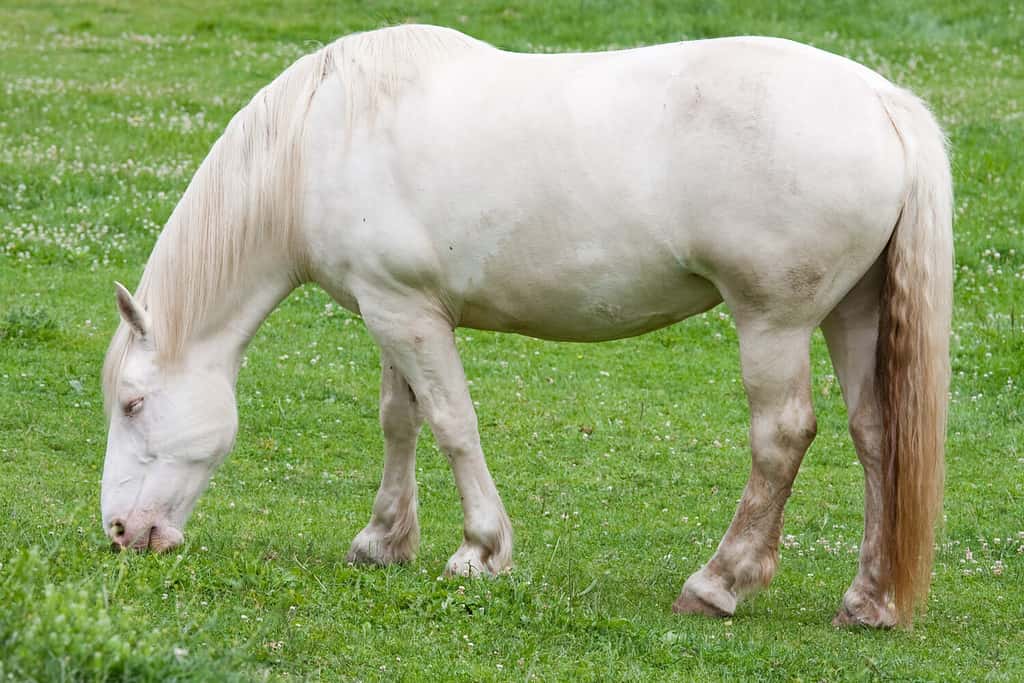
©Nancy Kennedy/Shutterstock.com
Can Horses Have Albinism?
The equine world makes it difficult to classify a true albino horse. Throughout history, horses with a white color have been named as albinos without proper use of the term. For example, some official breed descriptions have called cremellos, perlinos, and other light-colored horses “albino.” This description does not coincide with the genetic definition of albinism, which denotes pink or pale eye color.
According to the Merck Veterinary Manual, true albinism remains rare among domesticated animals like horses. Albino horses can be a possibility, but most examples of white horses do not carry the genes for albinism.
Thank you for reading! Have some feedback for us? Contact the AZ Animals editorial team.

